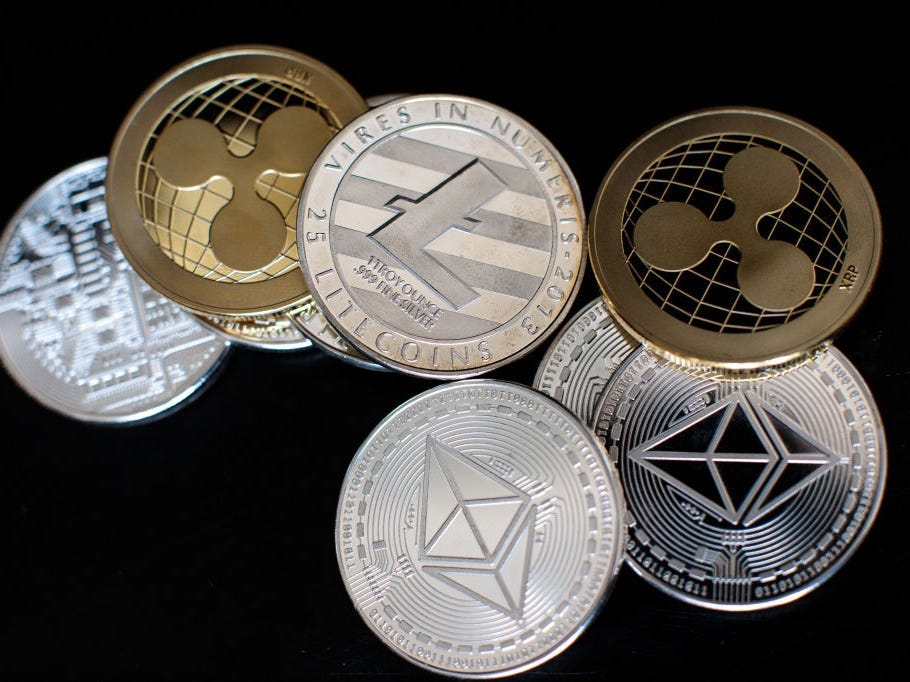- Nick Tomaino’s ability to spot a great product helped him nab his first crypto VC fund.
- He just closed a third fund, which is six times bigger than his original fund.
- On a podcast, he breaks down how he invests and shares what he likes about Polkadot (DOT).
Nick Tomaino has an eye for spotting disruptive and potentially world-changing products.
In fact, when he came across crypto trading platform Coinbase in its early days, Tomaino had such high conviction in the product that he dropped out of business school to work on it full-time.
Tomaino’s bullishness and expertise in the crypto space helped him secure his first $20 million venture capital fund backed by the likes of Mark Cuban and Peter Thiel in 2017.
Now he has just closed his third fund, which is more than six times bigger than his first, for his venture firm 1confirmation.
In four short years. Tomaino is now managing over $800 million in assets.
On a June 1 episode of the "Unchained" podcast with crypto journalist Laura Shin, Tomaino shared his insight into investing in early-stage crypto companies and his outlook for the market.
Investing strategy
His thesis is very simple, Tomaino said on the podcast.
"Back authentic founders that have deep historical context on crypto, that are building products that we understand as users," Tomaino said.
This is exactly how Tomaino ended up at Coinbase.
On the podcast, he described the struggles of trying to buy bitcoin by going through the cumbersome process of going to an ATM to get cash out to then wire the cash to now-defunct crypto exchange Mt Gox via Western Union.
"That was the best way to buy bitcoin at that time," Tomaino said. "Then Coinbase came along, it was just this product that made it dead simple. That's kind of what drew me. We kind of let the products guide our investment thinking."
The philosophy is what helped him become one of Coinbase's first employees when it was still a private company.
And it's a philosophy Tomaino sticks to. He currently looks to invest in bleeding edge technologies that are in the pre-seed or seed stage, typically writing checks of between $1 million to $3 million, he said on the podcast.
Tomaino's portfolio also has investments in core cryptocurrency networks, such as blockchains like bitcoin, ethereum and polkadot.
Crypto network investing
Investing in cryptocurrency protocols and networks can be challenging, with so many launching and all with their own positives and negatives.
Most of the crypto companies Tomaino invests in leverage ethereum, which is a blockchain that powers a number of applications through its smart-contract functionality.
"It's working really well," said Tomaino, on the podcast. "But I'm not someone who thinks everything is going to happen on ethereum."
Ethereum has scalability challenges, which results in high gas fees and slow transaction times.
An upgrade to ethereum 2.0 is set to resolve these issues and is expected to occur later this year.
In the meantime, developers and investors are looking at alternative options.
One is to bet on layer-two protocols. These are solutions that are built on top of the ethereum blockchain. They solve some of the scalability and speed issues, while allowing developers and projects to leverage the ethereum ecosystem.
Some examples of layer two solutions are Polygon (MATIC) and xDai (STAKE).
Tomaino said on the podcast he is skeptical on the potential of layer-two products.
"I think just like in 2016, there are some promising initiatives at layer 2 that are bringing scalability to ethereum," Tomaino said. "Some of that stuff may happen. It's probably going to take a lot longer than we think. "
Betting on layer-one protocols
Another option is to leverage layer-one protocols, which are blockchains, such as ethereum and bitcoin.
In recognizing ethereum's challenges, developers and crypto experts have rushed to launch new, or revitalize, layer one protocols that present solutions to ethereum's challenges.
And while Tomaino expects ethereum to have the best chance of being the long-term winner in protocols, he highlights there are scenarios in which it's unlikely to be feasible to leverage this particular network.
"I think if you're a crypto art marketplace, where people are buying pieces of crypto art for thousands of dollars, then paying $50 or $90 for a transaction is okay," Tomaino said. "But for a $100 asset within a game or something, it's just not viable."
Polkadot (DOT) and cosmos (ATOM) are protocols that enable developers to create custom blockchains for bespoke products, which then communicate with other blockchains creating a multi-chain environment that can still link in with bitcoin and ethereum.
Polkadot's native token DOT is up around 200% year-to-date, while cosmos' native token ATOM is up around 127%.
"We're very excited about other layer 1 chains like polkadot and cosmos that are bringing in new developers and enabling new use cases that ethereum simply can't support right now," Tomaino said.
Many layer one protocols are still at a speculative phase, so it's hard to pick a winner, Tomaino said.
The case for polkadot
However, Tomaino finds polkadot exciting, because it's pushing the space forward by answering "a hundred billion dollar question" of how blockchains can create a type of decentralized governance that can actually evolve.
No one has really done that, Tomaino said.
"I would say what I like about polkadot - and particularly like the radical approach to on-chain governance - is this idea of a 12-member council that is making decisions," Tomaino said.
Tomaino is excited about the idea of decentralized governance that gives power to the token holders, but can also evolve faster than the current governance minimization approach that's currently in most blockchains.
"And that's kind of the promise of something like polkadot," Tomaino said. "I think the polkadot governance is wildly unappreciated and unexplored."
Tomaino is not alone in betting on polkadot.
British crypto VC firm KR1 has a similar take on the potential for polkadot based on their experience of the challenges of the ethereum network.
Inside recently spoke to the co-founders of KR1, George McDonaugh and Keld van Schreven about their investment case for polkadot.
Polkadot "basically fixes a lot of the problems with ethereum," van Schreven said, adding: "Once you frame who created it and why, then that becomes important."
Like Tomaino, he is excited by the on-chain voting capabilities - the process for managing and implementing changes to the blockchain - in addition to polkadot being cheaper, faster and more developer friendly.
"I think it's going to be one of the winners in the next few years, and then it's going to last for maybe 100 years," van Schreven said.
Greg King of Osprey Funds also recently told Insider why he's bullish on the protocol.











